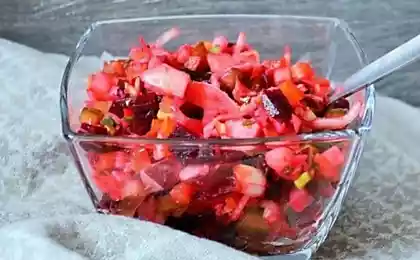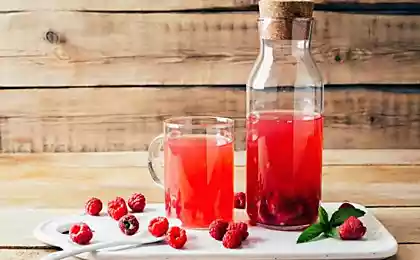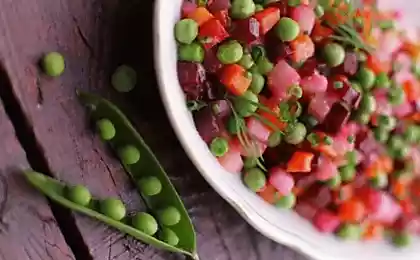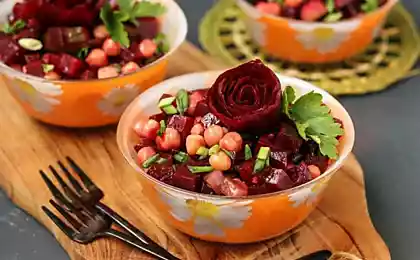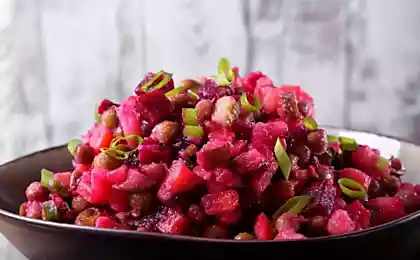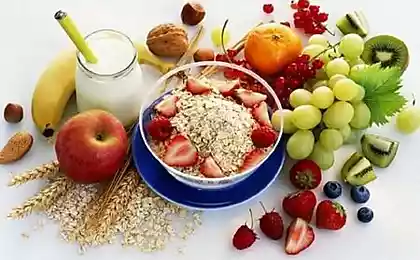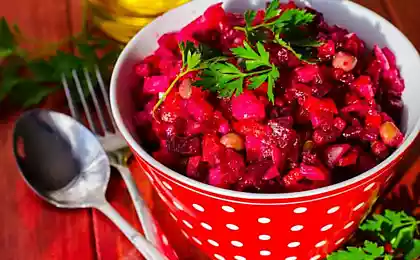502
Cranberry — interesting facts and original recipes
The generic name of cranberries oxycoccos — translated from Latin means "sour ball". But the etymology of the Slavic name of this fruit is not so straightforward. Lev Uspensky in his book "Why not otherwise" cites several versions of, "Some think it (the word "cranberry") meant initially "berry, I love to bite, willing the birds were eating" (in Serbian it is "kluska"). Others are looking for relationship with the "key", "kluchevoy", "marsh berry". In the North and North-West Russia cranberries called zhuravlikha (Vologda region). Obviously, this is due to the fact that cranberries like to eat nesting in the marshes the cranes. Like the name the cranberry the cranberry means "crane berry."

America's Sweetheart
To cultivate the cranberry began in the USA in the XIX century. In 1816, captain Henry Hall of Massachusetts, has fenced his land and began to take shoots on yield and size. He noticed that cranberries grow better if peaty soil covered with sand. As it turned out, the sand protects shoots from extremes of temperature. Almost twenty years after the experiments of Hall cranberries began on an industrial scale on special plantations.
Now in the US and Canada, where cranberries are considered a national treasure, plantations cover more than 16,000 hectares. Every year Americans eat 1 million 860 000 tons of cranberries. In Russia the domesticated large fruited cranberries were brought in 1871 Edward L. Regel, Director of the Imperial Botanical garden in St. Petersburg.
The record for the vitamins
In Russia cranberries have always been appreciated for its medicinal properties. Sailors often took stock of pickled cranberries in swimming. In fact, today we know that cranberry is a champion in content of vitamin C and antioxidants. In addition, cranberry juice acts as an antipyretic, improves digestion, has antibacterial and wound healing properties and strengthens the cardiovascular system.
What to make of the cranberry?
The best-known species of cranberry marsh and large. Varieties of both species, there are dozens. Large-fruited cranberry is more fleshy. It is well suited for drying, after which it can be added to cakes and chocolate. Berries cranberry bog is smaller, but juicier: they make delicious juice. Cranberry is a versatile berry that it can be stored frozen, dried, pickled and pureed with sugar. Prepare sauces for meat and fish (in this case, frozen berries thawed and immediately placed in boiling water), cooked fruit drinks and jams, added to pickles and salads with dried cranberries can bake bread and even make it into chips.
Cranberry Mojito with citrus sorbet
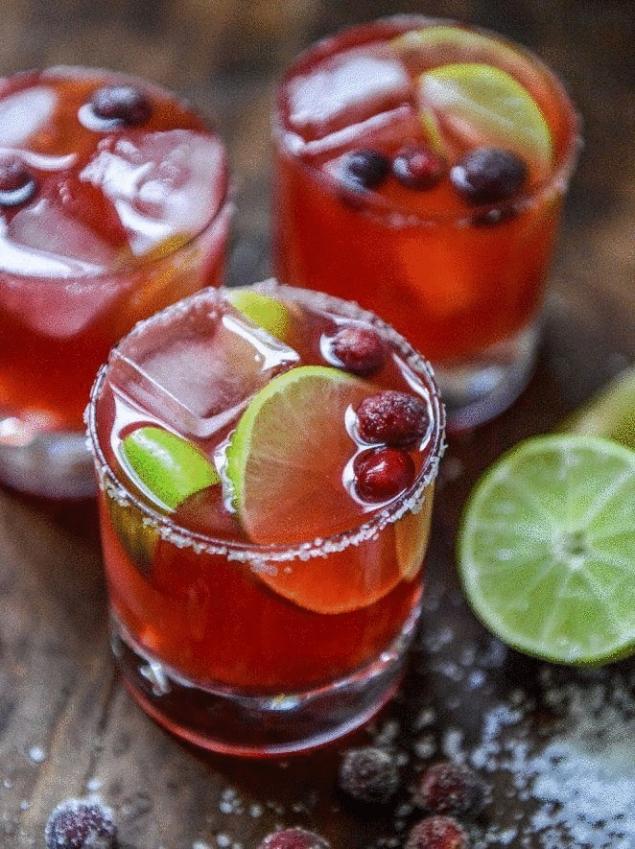
Ingredients (for one serving):
Cranberry juice — 45 ml
Lime juice 115 ml
Lemon juice — 80 ml
Grapefruit juice — 60 ml
Orange juice — 60 ml
Coconut syrup — 10 ml
Pineapple juice — 15 ml
Sugar — 100 g
Grenadine — 7 ml
Rosemary — 5 g
Sage — 5 g
Thyme — 5 g
Mint — 5 g
Pectin — 1 g
Ice frappe
Ice cubes
Method of preparation:
1. Rosemary, sage, thyme and mint mix with sugar, put on fire and bring to boil.
2. The resulting mass is allowed to stand for 1 hour to infuse, then strain.
3. Mix the citrus juice in a deep glass and pour in the mixture of herbs and sugar. Add pectin. Stir and bring everything to a boil. Then cool at room temperature and send in the freezer until firm.
4. On the bottom of the glass put a ball of sorbet of Mojito. Add ice frappe to 2/3 the volume of the glass.
5. Put in a shaker: ice cubes, coconut syrup, cranberry juice, pineapple juice, lime juice 15 ml grenadine. Shake.
6. Pour contents of shaker into a glass with ice and sorbet. Submit immediately.
Far Eastern chugunok with vinaigrette and sorbet cranberry
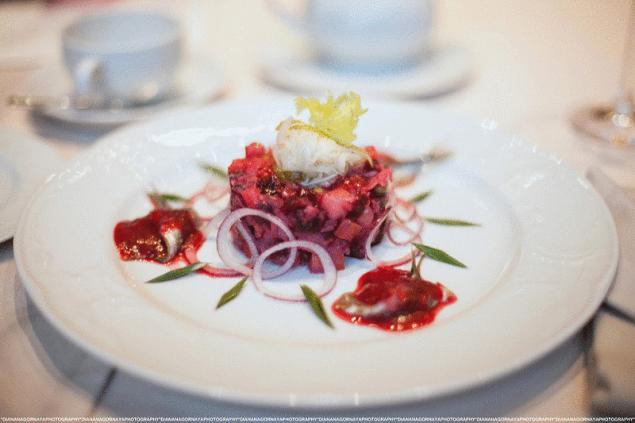
Ingredients (for four servings):
Potatoes — 100 g
Carrots — 80 g
Beet — 200 g
Canned green peas — 80 g
Pickled cabbage — 80 g
Chugunok far Eastern — 140 g
Red onions — 40 g,
green onions — 20 g
Salad of Chisseaux — 20 g,
daikon radish — 20 grams
Pickled cucumbers — 40 g
Frozen cranberry — 580 g
Sugar — 700 g
Glucose — 40 g
Pectin — 8 g
Wine vinegar — 20 ml
Honey — 4 tsp
Method of preparation:
Vinaigrette
1. Boil washed potatoes and carrots in their skins.
2. Washed unpeeled beets, wrap in foil and bake in the oven at a temperature of 200-250 degrees for about an hour.
3. Cut into small cubes, ready peeled vegetables, pickled cucumbers and 25 g far Eastern tohunga, mix well.
4. Add sauerkraut, canned green peas.
Cranberry sorbet
1. Mix cranberries with sugar (80 g cranberries and leave for the sauce).
2. Add the glucose, pour the water.
3. The resulting mass, bring to boil and add pectin.
4. After adding the pectin again bring to a boil, remove from heat and leave to cool.
5. The cooled mass is put in a deep bowl and put in the freezer.
6. To freeze pulp for sorbet to the formation of a light crust of ice and whisk, repeat this procedure one more time, then leave in the freezer to complete crystallization.
Cranberry sauce
1. The rest of the cranberries in a blender with honey and a splash of wine vinegar.
2. Fill vinaigrette 30 g cranberry sauce, stir, put in the middle of the ball of cranberry sorbet.
3. Slice the red onion rings.
4. The green onion cut into several large pieces.
5. Before serving decorate the salad fresh greens, rings of red onion, a few whole toronkai, a mini-salad of Chisseaux and green onion.
Recipes of chef Viktor Osipenko
источник:vokrugsveta.ru
Source: /users/1077

America's Sweetheart
To cultivate the cranberry began in the USA in the XIX century. In 1816, captain Henry Hall of Massachusetts, has fenced his land and began to take shoots on yield and size. He noticed that cranberries grow better if peaty soil covered with sand. As it turned out, the sand protects shoots from extremes of temperature. Almost twenty years after the experiments of Hall cranberries began on an industrial scale on special plantations.
Now in the US and Canada, where cranberries are considered a national treasure, plantations cover more than 16,000 hectares. Every year Americans eat 1 million 860 000 tons of cranberries. In Russia the domesticated large fruited cranberries were brought in 1871 Edward L. Regel, Director of the Imperial Botanical garden in St. Petersburg.
The record for the vitamins
In Russia cranberries have always been appreciated for its medicinal properties. Sailors often took stock of pickled cranberries in swimming. In fact, today we know that cranberry is a champion in content of vitamin C and antioxidants. In addition, cranberry juice acts as an antipyretic, improves digestion, has antibacterial and wound healing properties and strengthens the cardiovascular system.
What to make of the cranberry?
The best-known species of cranberry marsh and large. Varieties of both species, there are dozens. Large-fruited cranberry is more fleshy. It is well suited for drying, after which it can be added to cakes and chocolate. Berries cranberry bog is smaller, but juicier: they make delicious juice. Cranberry is a versatile berry that it can be stored frozen, dried, pickled and pureed with sugar. Prepare sauces for meat and fish (in this case, frozen berries thawed and immediately placed in boiling water), cooked fruit drinks and jams, added to pickles and salads with dried cranberries can bake bread and even make it into chips.
Cranberry Mojito with citrus sorbet

Ingredients (for one serving):
Cranberry juice — 45 ml
Lime juice 115 ml
Lemon juice — 80 ml
Grapefruit juice — 60 ml
Orange juice — 60 ml
Coconut syrup — 10 ml
Pineapple juice — 15 ml
Sugar — 100 g
Grenadine — 7 ml
Rosemary — 5 g
Sage — 5 g
Thyme — 5 g
Mint — 5 g
Pectin — 1 g
Ice frappe
Ice cubes
Method of preparation:
1. Rosemary, sage, thyme and mint mix with sugar, put on fire and bring to boil.
2. The resulting mass is allowed to stand for 1 hour to infuse, then strain.
3. Mix the citrus juice in a deep glass and pour in the mixture of herbs and sugar. Add pectin. Stir and bring everything to a boil. Then cool at room temperature and send in the freezer until firm.
4. On the bottom of the glass put a ball of sorbet of Mojito. Add ice frappe to 2/3 the volume of the glass.
5. Put in a shaker: ice cubes, coconut syrup, cranberry juice, pineapple juice, lime juice 15 ml grenadine. Shake.
6. Pour contents of shaker into a glass with ice and sorbet. Submit immediately.
Far Eastern chugunok with vinaigrette and sorbet cranberry

Ingredients (for four servings):
Potatoes — 100 g
Carrots — 80 g
Beet — 200 g
Canned green peas — 80 g
Pickled cabbage — 80 g
Chugunok far Eastern — 140 g
Red onions — 40 g,
green onions — 20 g
Salad of Chisseaux — 20 g,
daikon radish — 20 grams
Pickled cucumbers — 40 g
Frozen cranberry — 580 g
Sugar — 700 g
Glucose — 40 g
Pectin — 8 g
Wine vinegar — 20 ml
Honey — 4 tsp
Method of preparation:
Vinaigrette
1. Boil washed potatoes and carrots in their skins.
2. Washed unpeeled beets, wrap in foil and bake in the oven at a temperature of 200-250 degrees for about an hour.
3. Cut into small cubes, ready peeled vegetables, pickled cucumbers and 25 g far Eastern tohunga, mix well.
4. Add sauerkraut, canned green peas.
Cranberry sorbet
1. Mix cranberries with sugar (80 g cranberries and leave for the sauce).
2. Add the glucose, pour the water.
3. The resulting mass, bring to boil and add pectin.
4. After adding the pectin again bring to a boil, remove from heat and leave to cool.
5. The cooled mass is put in a deep bowl and put in the freezer.
6. To freeze pulp for sorbet to the formation of a light crust of ice and whisk, repeat this procedure one more time, then leave in the freezer to complete crystallization.
Cranberry sauce
1. The rest of the cranberries in a blender with honey and a splash of wine vinegar.
2. Fill vinaigrette 30 g cranberry sauce, stir, put in the middle of the ball of cranberry sorbet.
3. Slice the red onion rings.
4. The green onion cut into several large pieces.
5. Before serving decorate the salad fresh greens, rings of red onion, a few whole toronkai, a mini-salad of Chisseaux and green onion.
Recipes of chef Viktor Osipenko
источник:vokrugsveta.ru
Source: /users/1077
To predict the weather on Earth can help the study of electrons in space
How to cope with ear pain folk remedies



